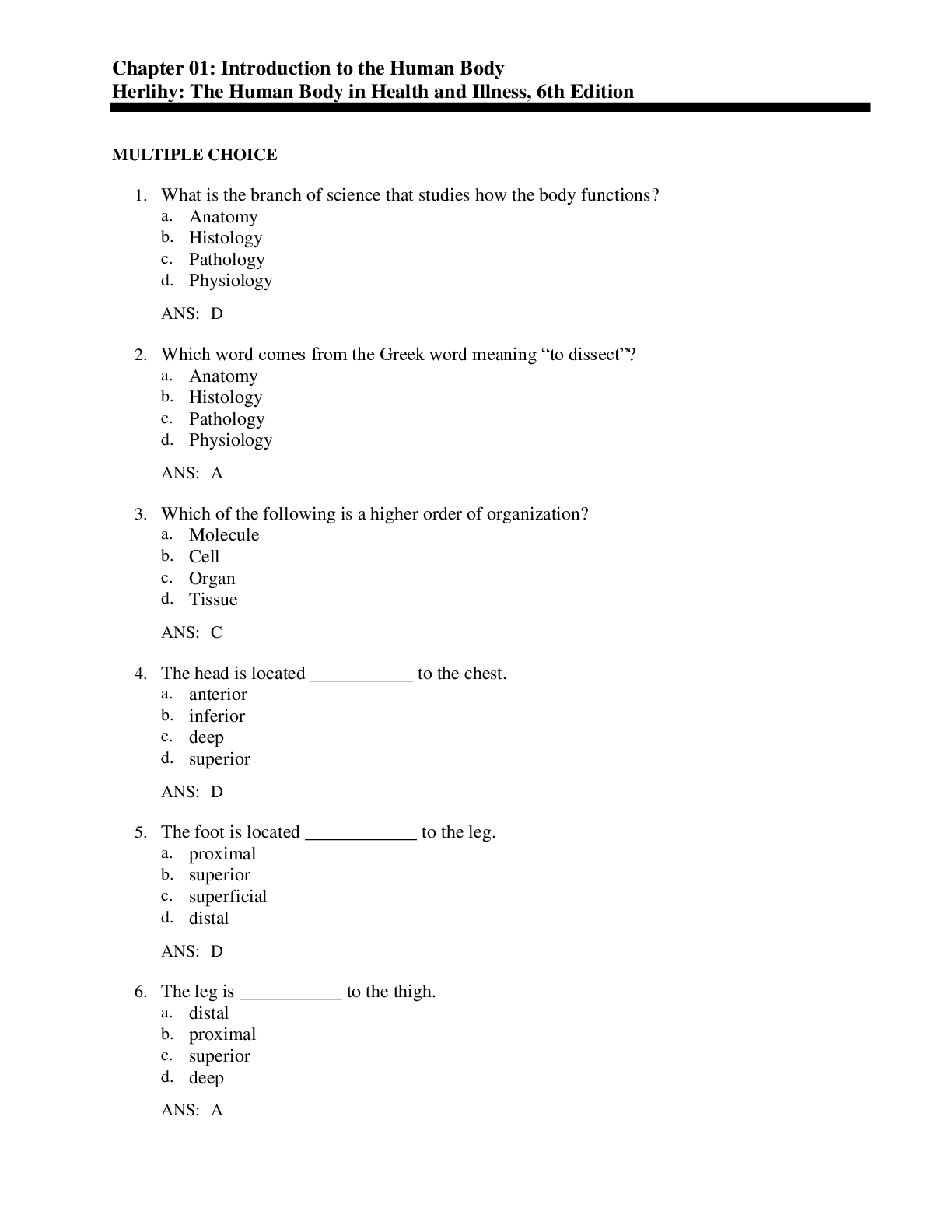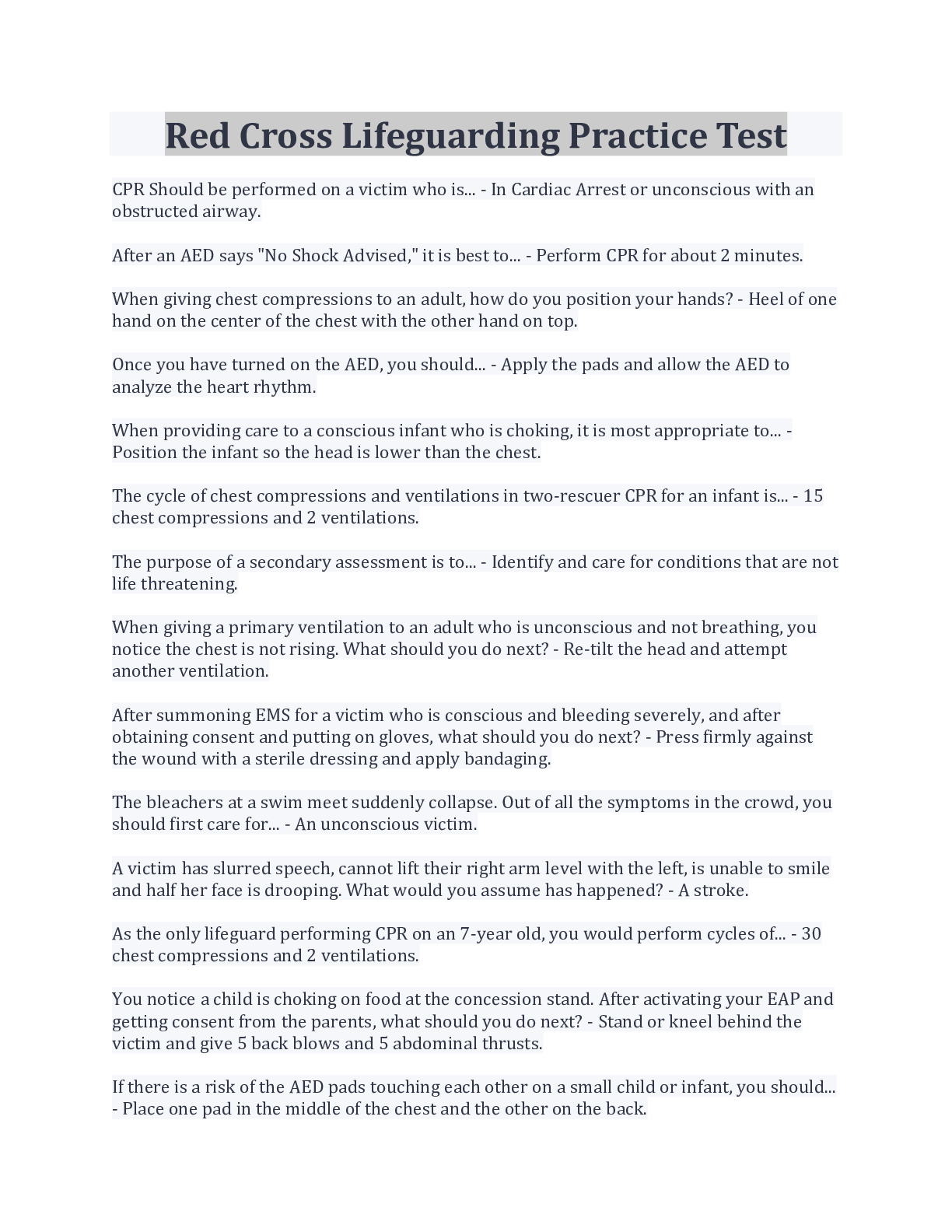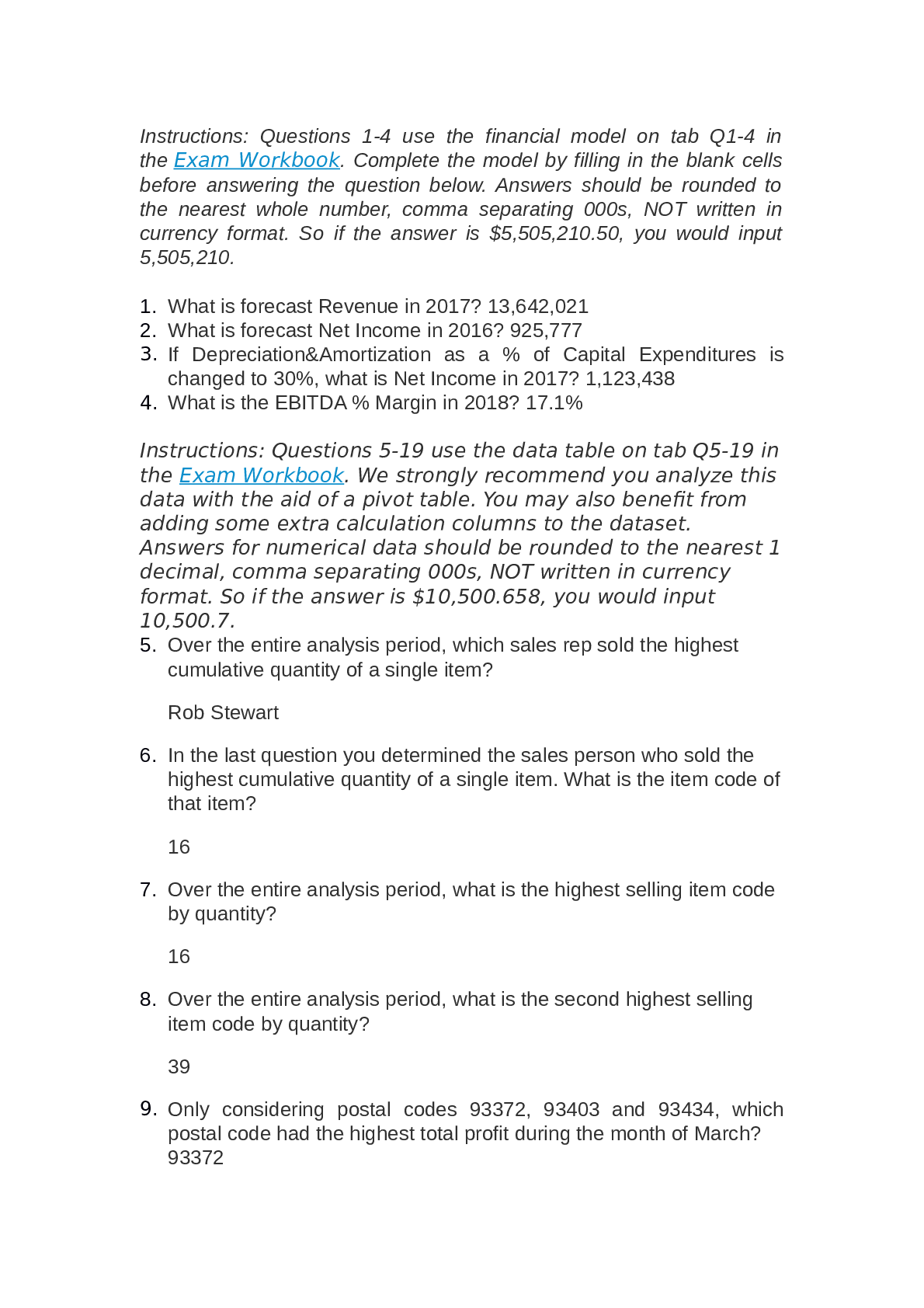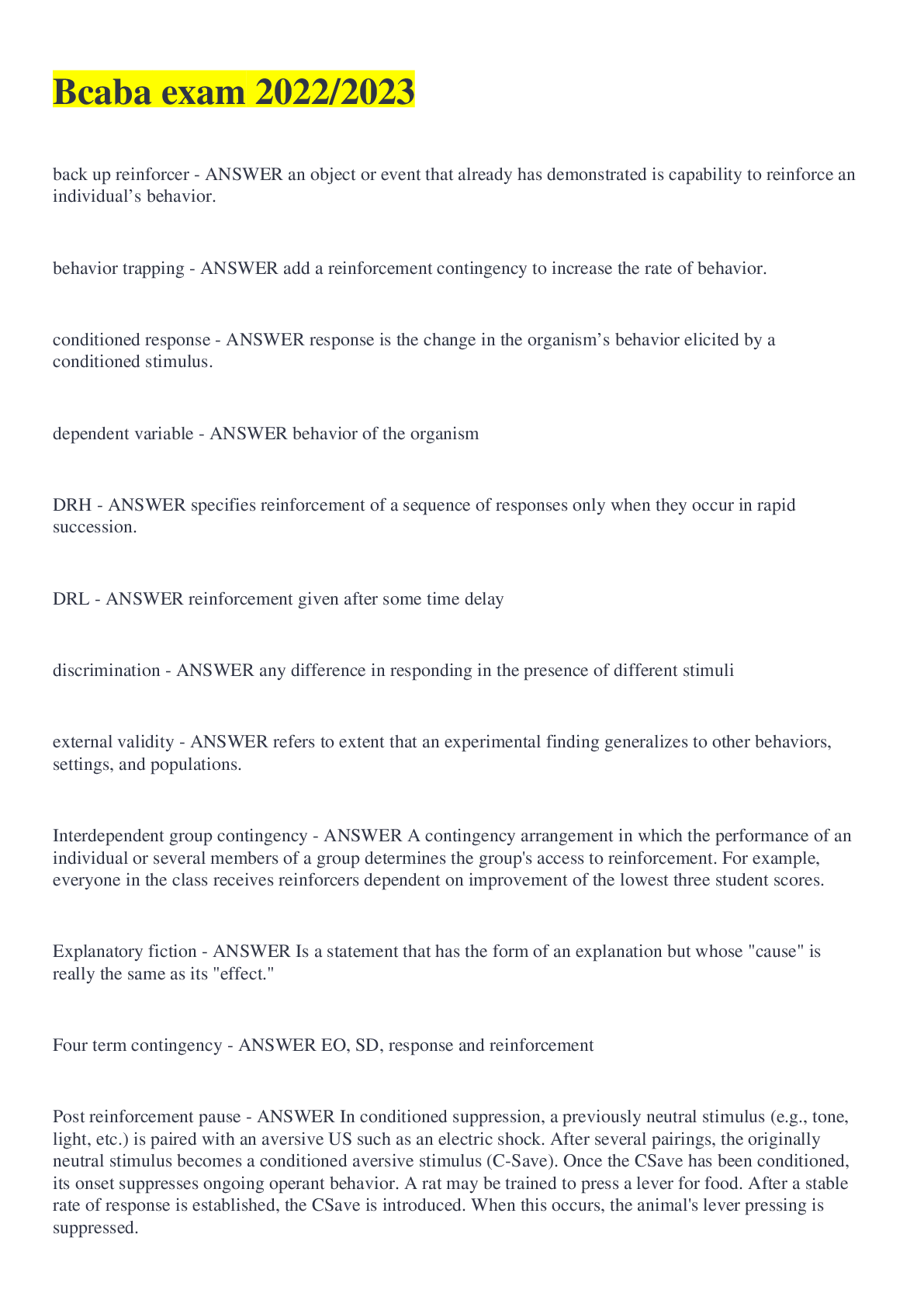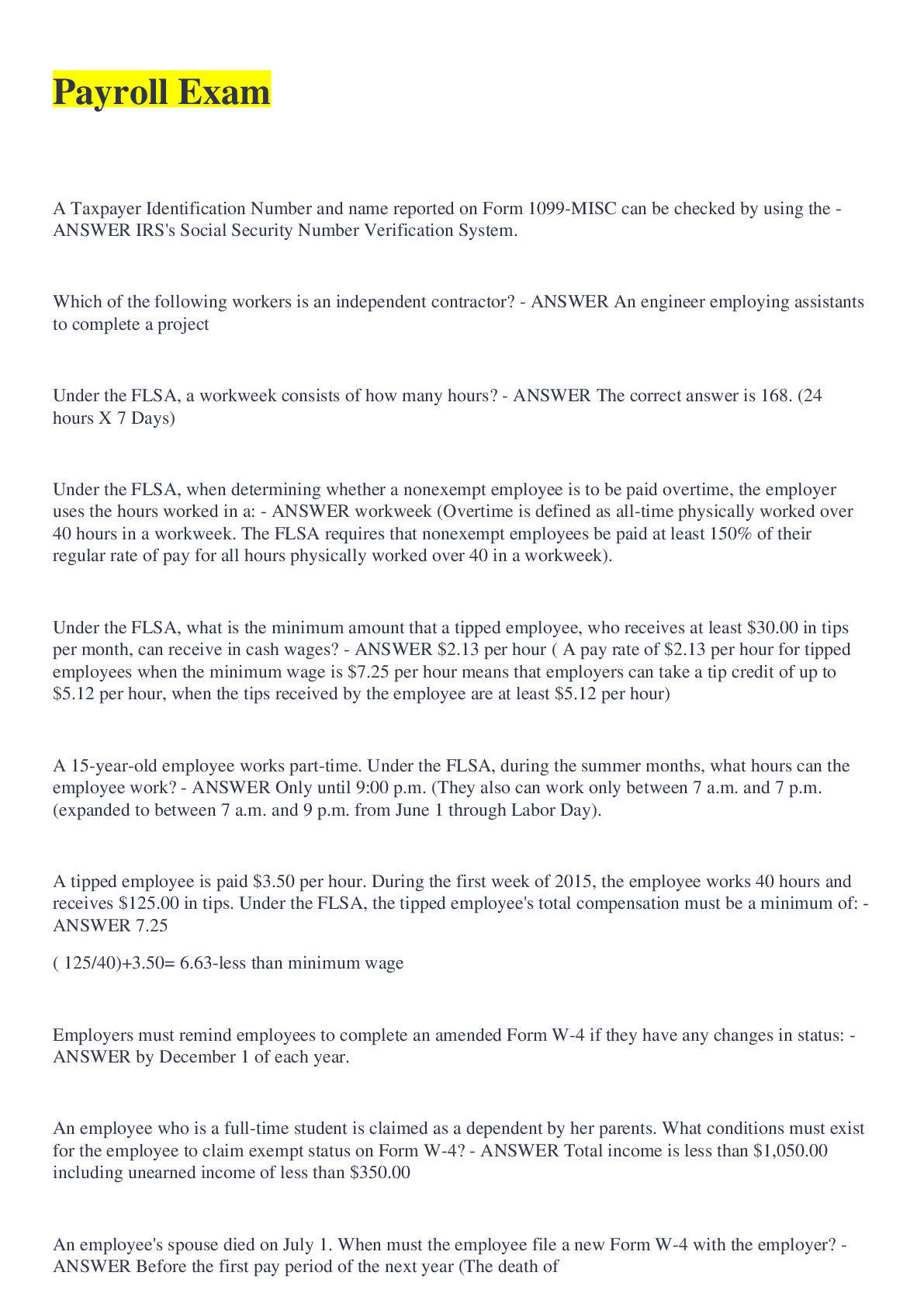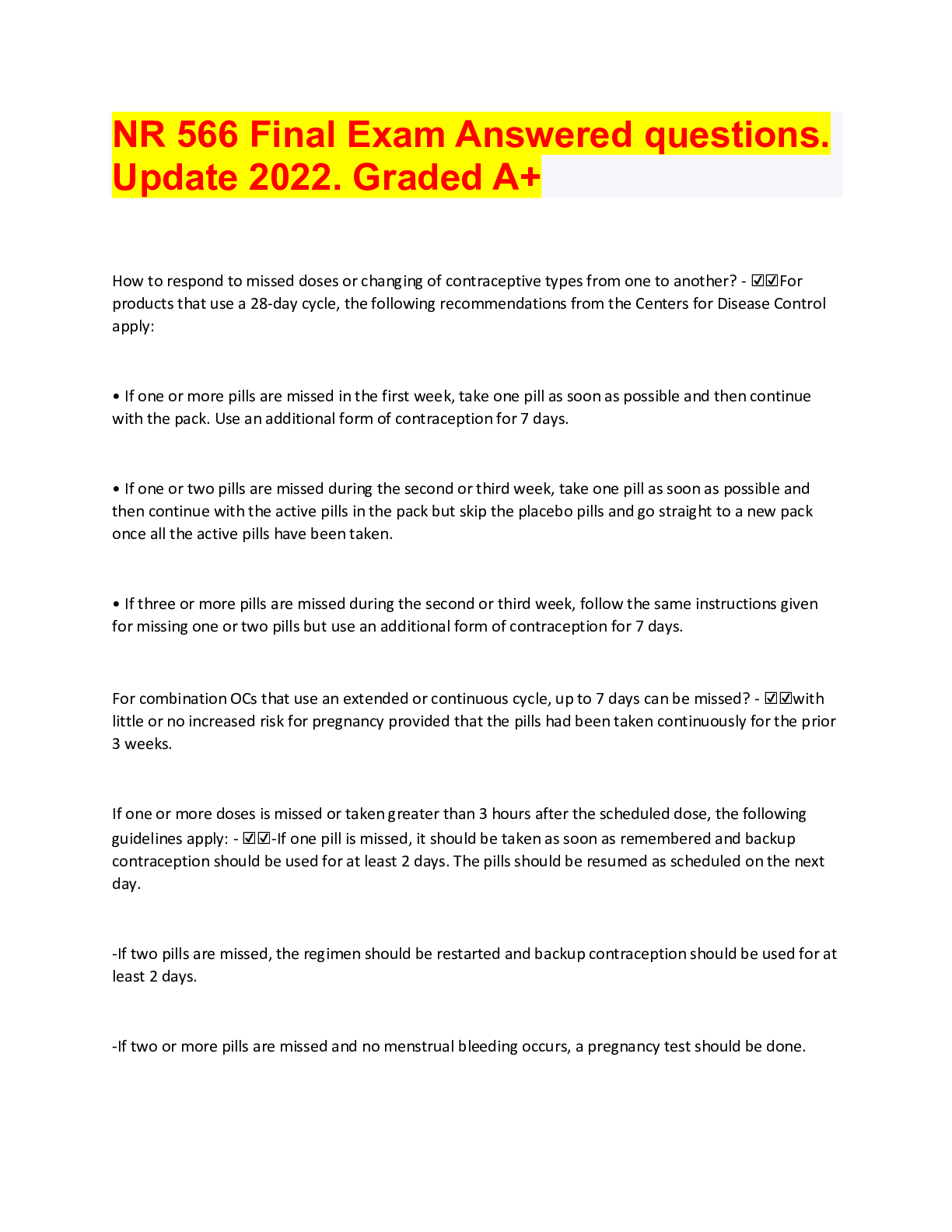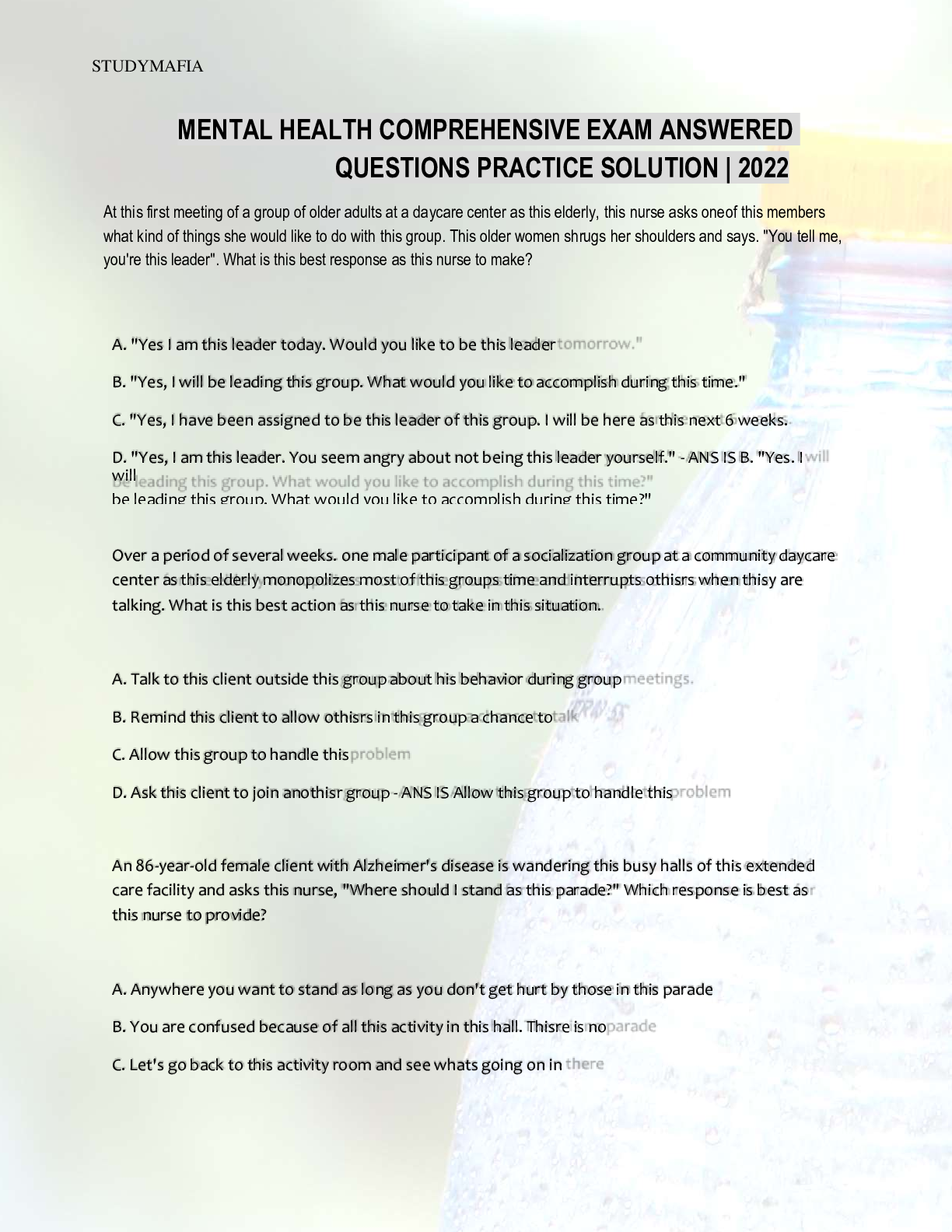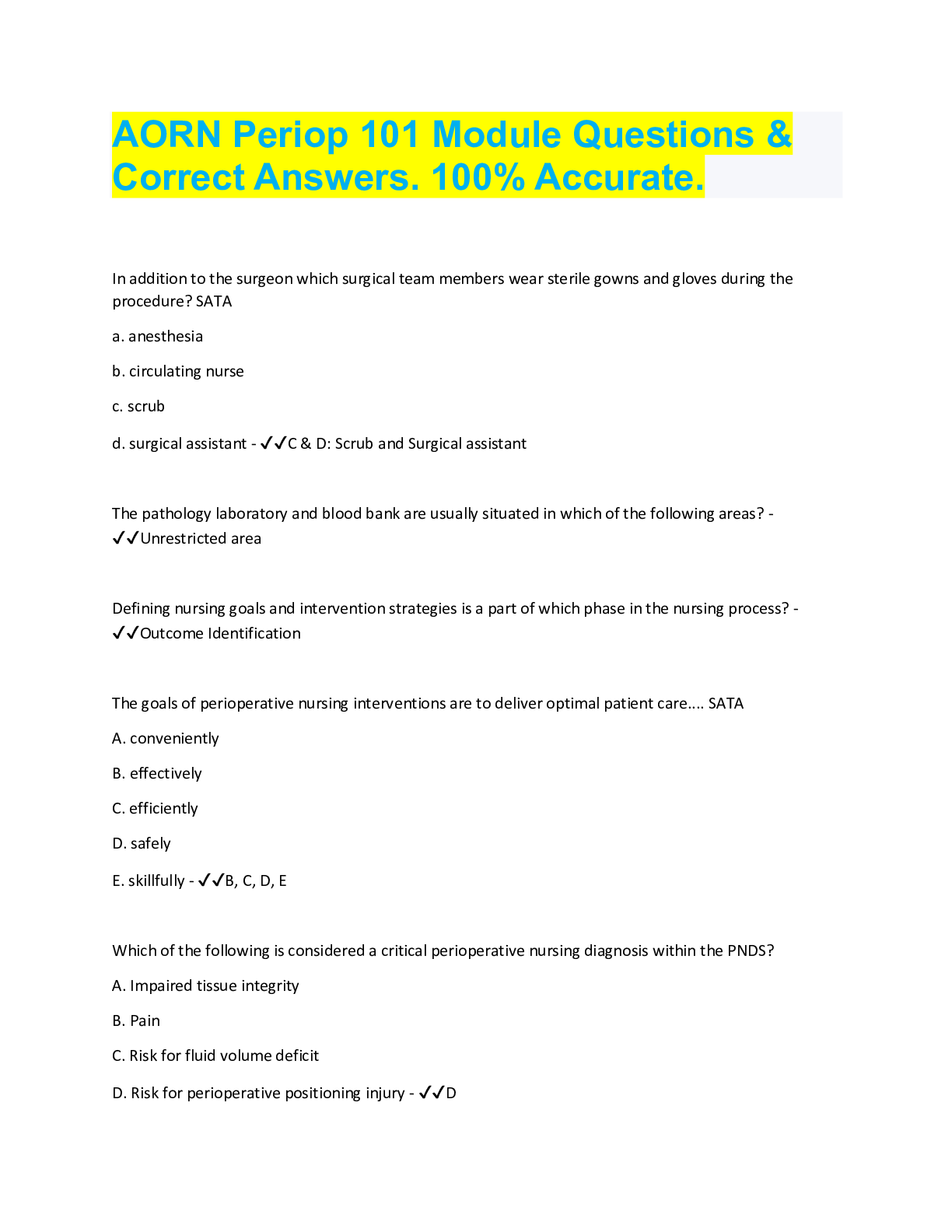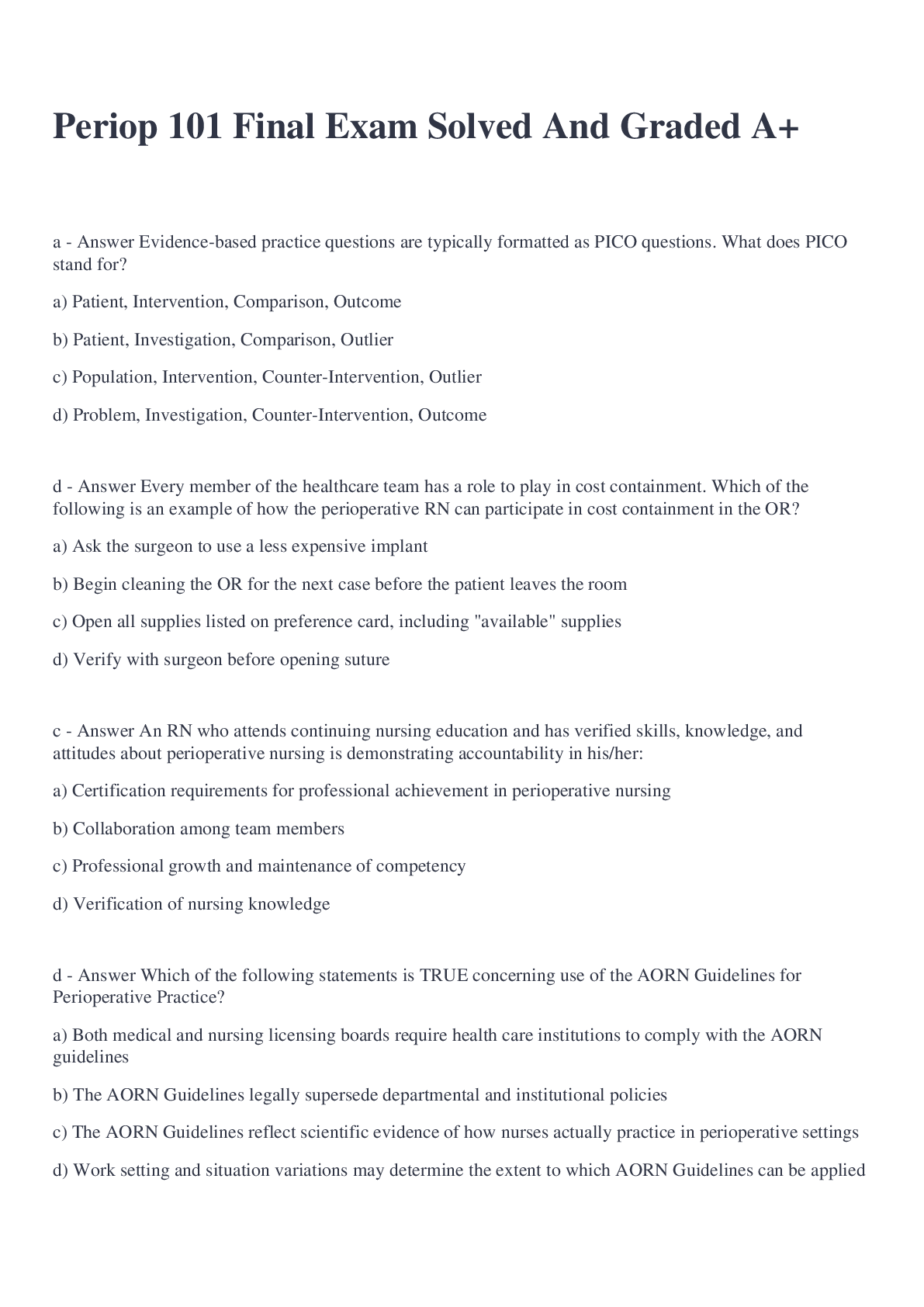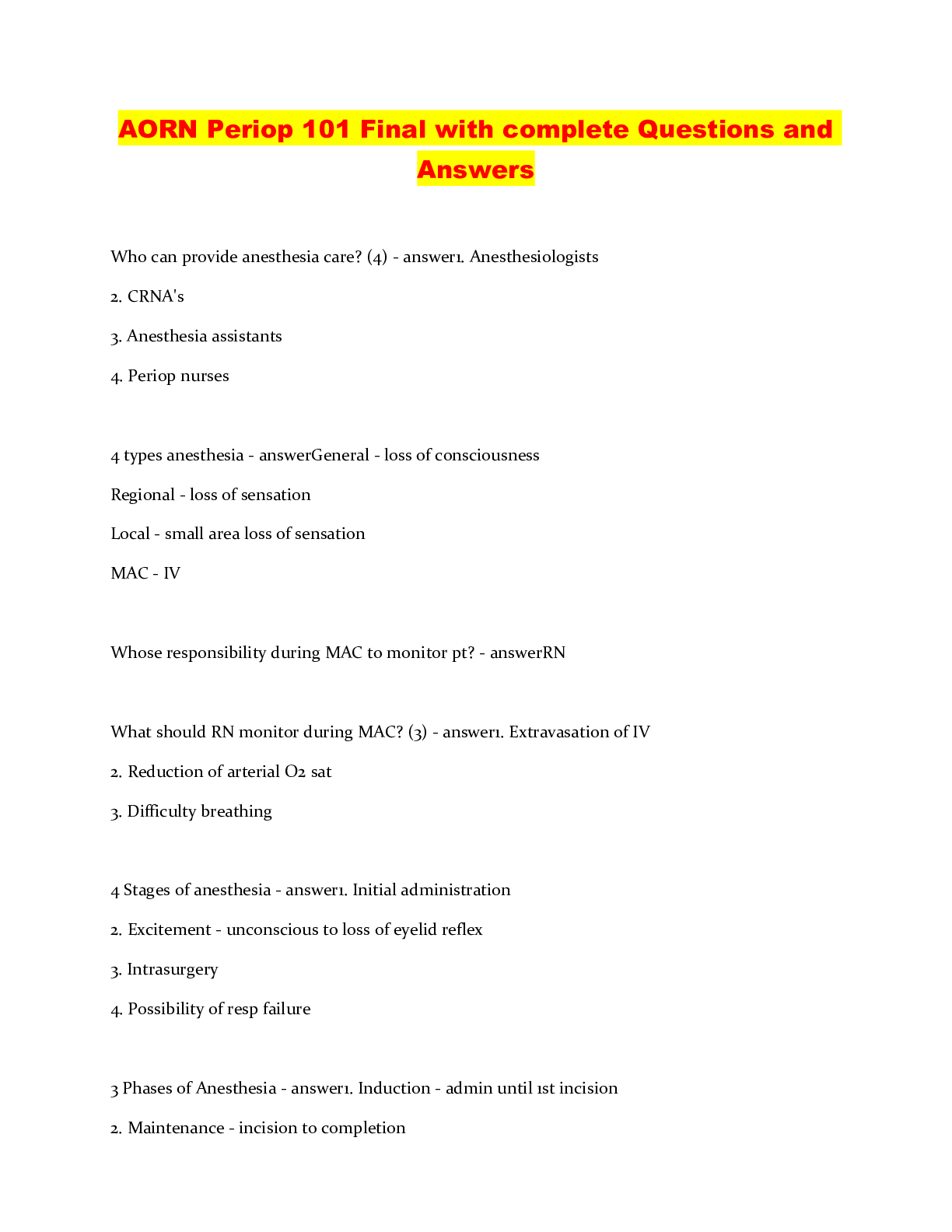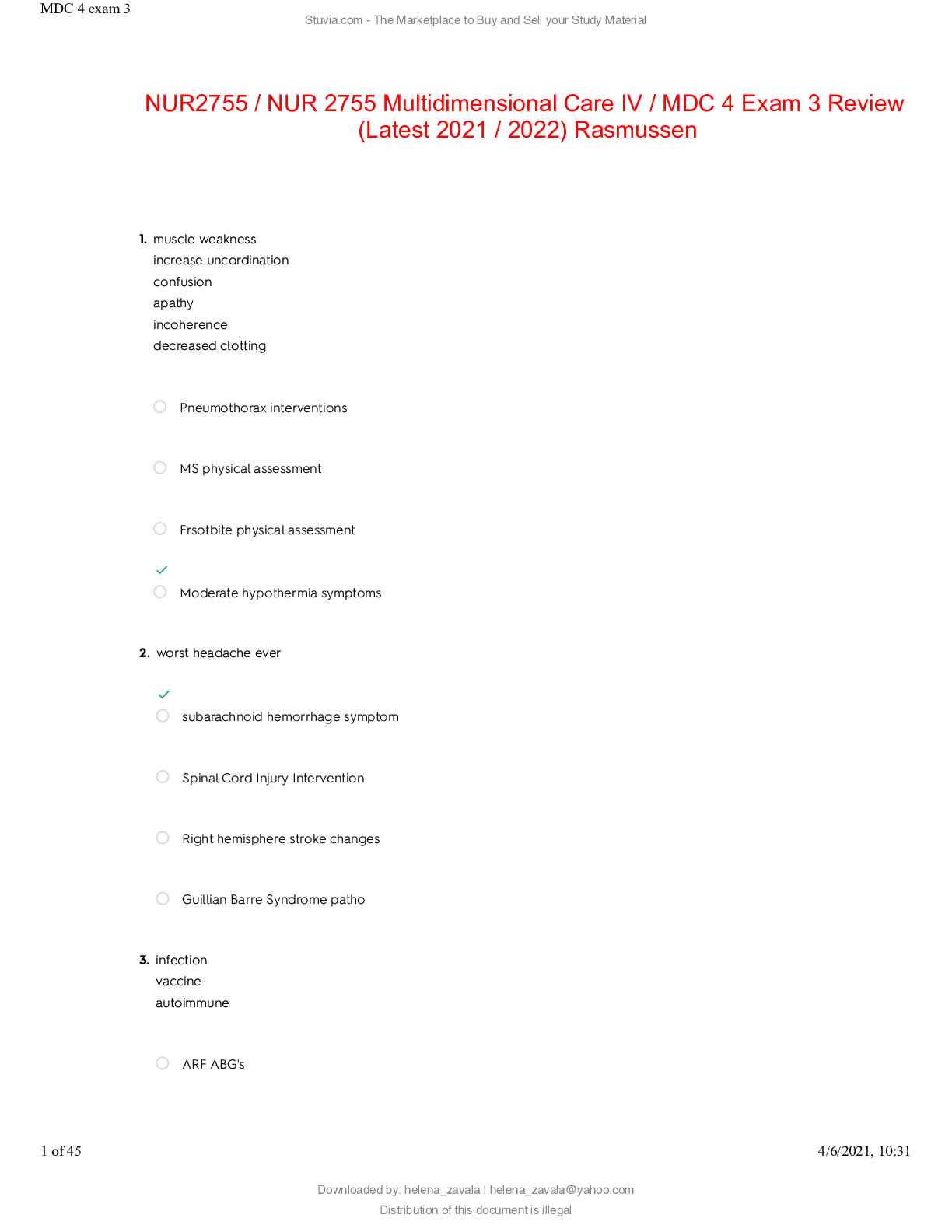Medical Studies > QUESTIONS & ANSWERS > NASM CPT EXAM ANSWERED QUESTIONS 100% CORRECT (All)
NASM CPT EXAM ANSWERED QUESTIONS 100% CORRECT
Document Content and Description Below
nervous system – ANSWER communication network within the body. nervous system functions – ANSWER 1. sensory: changes in the environment 2. integrative: analyze and interpret 3. motor: the... neuromuscular response Central nervous system (CNS) – ANSWER brain and spinal cord; coordinates activity of the body Peripheral nervous system (PNS) – ANSWER nerves connecting the CNS to the rest of the body and environment. subdivisions: - somatic - autonomic - parasympathetic - sympathetic Somatic – ANSWER - apart of the PNS - serves outer areas of the body and skeletal muscle; voluntary Autonomic – ANSWER - apart of the PNS - involuntary systems (e.g., heart, digestion). subdivisions: - parasympathetic - sympathetic Parasympathetic – ANSWER - apart of the autonomic system of the PNS - decreases activation during rest and recovery. Sympathetic – ANSWER - apart of the autonomic system of the PNS - increases activation to prep for activity. neuron – ANSWER functional unit of the nervous system. - motor (efferent) - sensory (afferent) motor neurons – ANSWER - efferent - transmit nerve impulses from CNS to effector sites. sensory neurons – ANSWER - afferent - respond to stimuli; transmit nerve impulses from effector sites to CNS. mechanoreceptors – ANSWER sense distortion in body tissues. Joint receptors – ANSWER respond to pressure, acceleration, and deceleration of joints. Golgi tendon organs (GTO) – ANSWER sense changes in muscular tension. Muscle spindles – ANSWER sense changes in muscle length. Tendons – ANSWER connect muscle to bone; provide anchor for muscles to produce force. Fascia – ANSWER outer layer of connective tissue surrounding a muscle. Fascicles – ANSWER bundle of individual muscle fibers. Muscle fiber – ANSWER cellular components and myofibrils encased in a plasma membrane. Sarcomere – ANSWER produces muscular contraction; repeating sections of actin and myosin. Sliding filament theory – ANSWER thick and thin filaments slide past one another, shortening the entire sarcomere. Type I muscle tissue – ANSWER - slow twitch - smaller size; fatigue slowly. Type II muscle tissue – ANSWER - fast twitch - larger size; quick to produce maximal tension; fatigue quickly. Motor unit – ANSWER one motor neuron and the muscle fibers it connects with. Neural activation – ANSWER contraction of a muscle generated by neural stimulation. Neurotransmitters – ANSWER chemical messengers that transport impulses from nerve to muscle. Local stabilization system – ANSWER attach directly to vertebrae. Consists of: transverse abdominis, internal oblique, multifidus, pelvic floor, diaphragm. Global stabilization system – ANSWER attach from pelvis to spine. Consists of: quadratus lumborum, psoas major, external oblique, rectus abdominis, gluteus medius, adductor complex, portions of internal oblique. Movement system – ANSWER attach spine and/or pelvis to extremities. Consists of: latissimus dorsi, hip flexors, hamstring complex, quadriceps. Axial skeleton – ANSWER skull, rib cage, and vertebral column. Appendicular skeleton – ANSWER upper and lower extremities, shoulder and pelvic girdles. Skeletal system functions – ANSWER supports, protects, allows bodily movement, produces blood, stores minerals. Skeletal depressions – ANSWER lattened or indented portions of abone; can be muscle attachment sites. Skeletal Processes – ANSWER projection protruding from a bone; muscles, tendons, and ligaments can attach. Ligaments – ANSWER connects bone to bone; little blood supply; slow to heal. Arthrokinematics – ANSWER joint motion. Non-synovial joints – ANSWER no joint cavity, connective tissue, or cartilage; little to no movement. Synovial joints – ANSWER held together by joint capsule and ligaments; associated with movement. Major motion types – ANSWER roll, slide, and spin. Hinge joint – ANSWER elbows, ankles; sagittal plane movement. Ball-and-socket joint – ANSWER shoulders, hips; most mobile, all three planes of motion. Weight-bearing exercise – ANSWER the best method of exercise to strengthen bones. Endocrine system – ANSWER system of glands; secretes hormones to regulate bodily function Testosterone – ANSWER responsible for male sex traits. Estrogen – ANSWER influences fat deposition on hips, buttocks, and thighs; responsible for female sex traits. Growth hormone – ANSWER anabolic hormone; responsible for bodily growth up until puberty. Insulin – ANSWER regulates energy and glucose metabolism in the body. Cardiorespiratory system – ANSWER cardiovascular and respiratory systems. Cardiovascular system – ANSWER heart, blood, and blood vessels. Cardiac muscle – ANSWER shorter, more tightly connected than skeletal muscle; involuntary. Atria – ANSWER smaller, superior chambers of the heart; receive blood from veins Right atrium – ANSWER gathers deoxygenated blood returning to the heart. Left atrium – ANSWER gathers oxygenated blood from the lungs. Sinoatrial (SA) node – ANSWER located in right atrium; initiates impulse for heart rate; "pacemaker for the heart". Ventricles – ANSWER larger, inferior chambers of the heart; pump blood out. Right ventricle – ANSWER pumps deoxygenated blood to lungs. Left ventricle – ANSWER pumps oxygenated blood to the body. Arteries – ANSWER carry blood away from the heart. Veins – ANSWER transport blood back to [Show More]
Last updated: 1 year ago
Preview 1 out of 49 pages
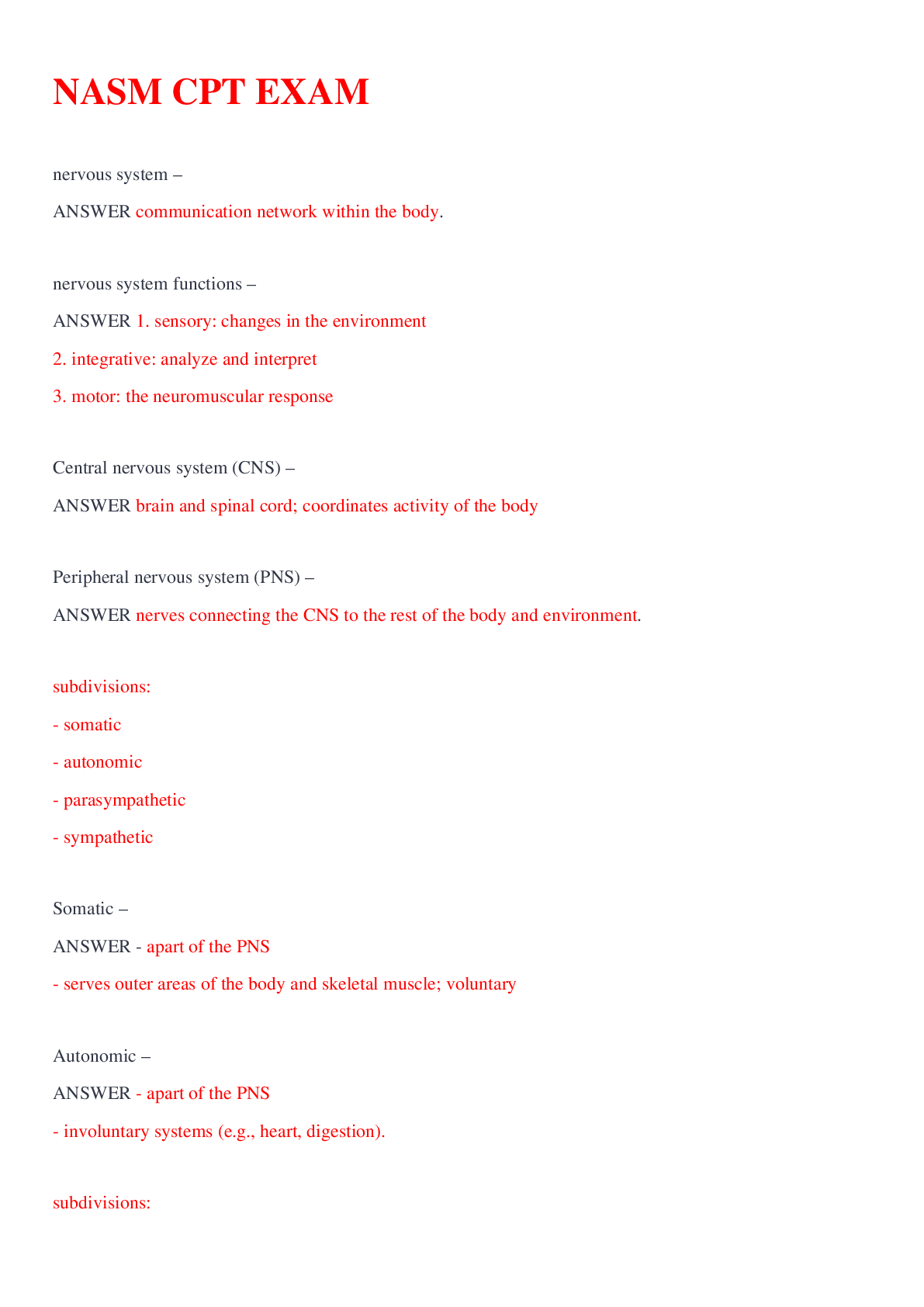
Reviews( 0 )
Document information
Connected school, study & course
About the document
Uploaded On
Jul 15, 2022
Number of pages
49
Written in
Additional information
This document has been written for:
Uploaded
Jul 15, 2022
Downloads
0
Views
32

